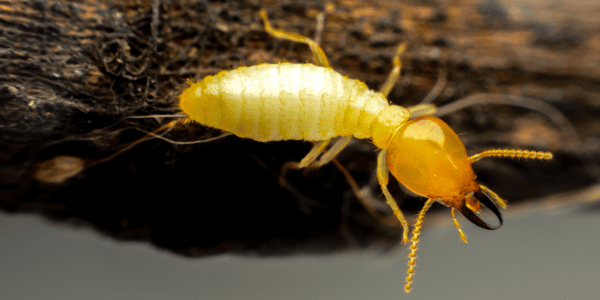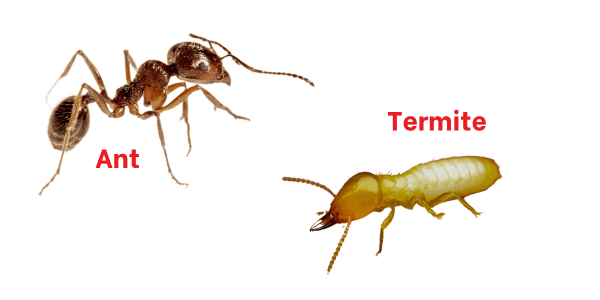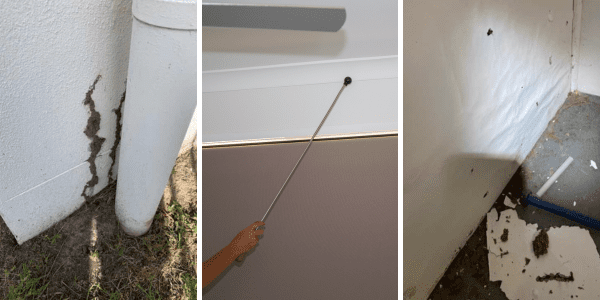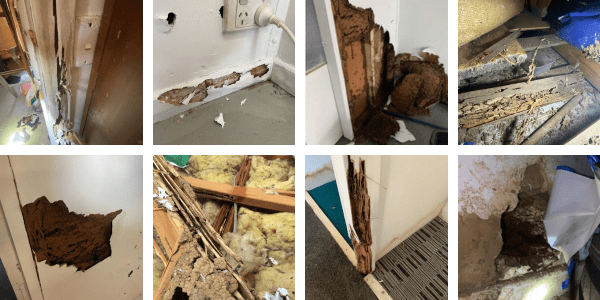What Do Termites Look Like in Australia?
Learn how to identify termites
Australia is home to a diverse range of insects and creatures, and unfortunately, some of them can cause major headaches for homeowners. One such pest is termites in Australia, particularly the notorious Queensland termites. These tiny but destructive insects can wreak havoc on your home if left undetected and untreated.
In this blog post, we will take a closer look at what termites in Australia look like, where they are commonly found, and how you can identify their presence in your home. So, let's dive in and learn more about these uninvited guests.
Physical Characteristics of Australian Termites
Taking a closer look at Australian termites, their physical features can be fascinating. These critters are usually of a soft white to light brown colour, similar to cream or beige, allowing them to blend into the wooden structures they infest. As for size, they generally measure between 1/4 to 1/2 inch long, often mistaken for small ants or other insects. Their body is soft and segmented, showcasing clear divisions in their anatomy, making them distinguishable when viewed up close.
Unlike ants, termites feature straight antennae, a simple line of bead-like segments extending from their head. Some termites, known as the reproductives, may have wings. These wings are typically of equal length and are shed once they find a suitable spot to establish a new colony.
The Differences Between Termite Castes
You may find it surprising that not all termites in a colony look the same. This is because there are different castes, each with its unique set of characteristics. Let's delve into these differences so you can identify which type of termite you may be dealing with:
1. Worker termites
Worker termites, often mistaken for white ants, are the smallest of the bunch. Don't let their size fool you though, they're the ones causing most of the wood damage in your home.
2. Soldier termites
Now, if you spot termites that seem to be wearing a helmet, you've probably stumbled upon soldier termites. They're easy to identify with their oversized, dark-coloured heads and robust jaws. But they're not in your home to eat; they're here to protect their colony from predators.
3. Reproductives
The last caste you should be aware of are the reproductives, also known as swarmers. These are the termites with wings, a little darker in colour, and often seen during swarm season. Their mission? To start new colonies and extend their termite kingdom.
Understanding the differences between termite castes can provide valuable insight into their roles, behaviour, and the level of infestation in your home. Remember, knowledge is power, especially when dealing with these timber-chomping intruders.
Discerning Between Termites and Ants
Mistaking ants for termites is a common occurrence among homeowners. Although they may seem similar at a casual glance, understanding the unique features of each can help you correctly identify your uninvited guests.
First, let's consider their physique. Ants possess a distinctive pinched waist, a feature termites lack. Termites have a straight, tube-like body, without any narrowing between their thorax and abdomen. Next, take a look at their antennae. Ants have bent or "elbowed" antennae, while those of termites are straight, resembling a string of tiny beads.
Now, let's discuss wings. Both ants and termites have winged reproductives, however, there's a key difference. In ants, the front pair of wings are noticeably larger than the rear pair. In contrast, termites flaunt two pairs of wings, all of the same length.
Recognizing these distinctions can aid in accurately identifying whether you're dealing with ants or termites. After all, correct identification is the first step in effective pest management.
Signs of Termites in Your Home
Detecting termites early can save you a lot of money and prevent potential structural damage to your home. So, what should you be looking for?
A common indicator of termite presence is the sudden appearance of mud tubes. Typically about the width of a pencil and found along the foundation of your house, on walls or in the crawl space. These tubes serve as protection for termites traveling between their colony and the wood they're feasting on.
A more subtle sign of termites can be changes in the wood within your home. Unexplained cracks on your wood surfaces could potentially be the work of these tiny critters. If you knock on the wood and it sounds hollow, there's a good chance you have termites.
Lastly, keep an eye out for termite droppings, or frass. These look like tiny, wood-coloured pellets. If you notice any of these signs, it's time to call in the professionals for a thorough inspection.
The Importance of an Annual Timber Pest Inspection
In Queensland, the threat of termites is consistent. Our hot, humid climate provides the perfect conditions for termites to thrive. Making an annual timber pest inspection an absolute must for every homeowner.
Think of it as your annual doctor's visit but for your home. Similar to how prompt diagnosis aids in effective health treatments, identifying termite presence in its initial stages helps avoid substantial repair costs and distress later. Especially as termite damage generally is not covered under most Australian house insurance.
At Dedant Building and Pest Inspections, our technicians are experts in the field. They are armed with sharp observational skills and years of experience making them highly proficient at uncovering the subtle signs of termites. Our inspections offer you peace of mind, knowing that your home is safe from termite invasions. So, make it a priority on your home maintenance calendar - the importance of this annual termite inspection simply cannot be overstated!
Preventative Measures for Termite Control
In addition to getting an annual inspection, there are certain steps you can take to keep termites out of your home. These include:
1. Address any moisture or dampness problems
Termites love damp conditions and are attracted to areas of high moisture. Such as a leaking tap or damp subfloors. To prevent termites, it is crucial you address any leaks in your plumbing and ensure proper drainage around your house to keep moisture at a minimum.
2. Store timber and wood away from the house
Keeping wood materials and timber stored away from your home is essential. Termites can easily enter a home through wood that is in contact with the ground and the house. This includes lumber, firewood, or even discarded furniture.
3. Keep your yard tidy and free from wooden debris
Similar to the above, it's important to keep your yard tidy and free of wooden debris. Such as dead trees, excess wooden and tree debris and keeping garden beds away from the house.
4. Trim back any branches over-hanging the roof
Termites are tricky creatures and can find multiple ways into the property including through the roof. Branches that are in contact with your roof or gutters pose a risk for termite infestation.
5. Keep an eye on your wooden structures
Regularly keep an eye out for any signs of termite damage, such as hollow-sounding wood or timber that appears to be 'sagging'. Termites eat wood from the inside out, only leaving a thin layer of timber to hide their presence. This causes the timber to sound hollow when tapped and can sometimes appear like it's sagging to the eye.
For an added layer of protection, consider installing a termite barrier. This barrier works to safeguard your home from future infestations by creating a 'barrier' around your home against subterranean termites. Highly effective, it lasts for up to 8 years. By taking these preventative steps, you'll be well on your way to maintaining a termite-free home.
Book your Termite Treatment Today!
At Dedant, all our inspectors are licensed and highly experienced at conducting timber pest inspections, termite treatments and installing chemical termite barriers.
We have been servicing Brisbane, Redland Bay, Moreton Bay, Gold Coast, the Scenic Rim, Sunshine Coast, Ipswich and Logan since 2009.
If you have any questions or would like to book, contact us on 07 3807 0122 or via our website.







